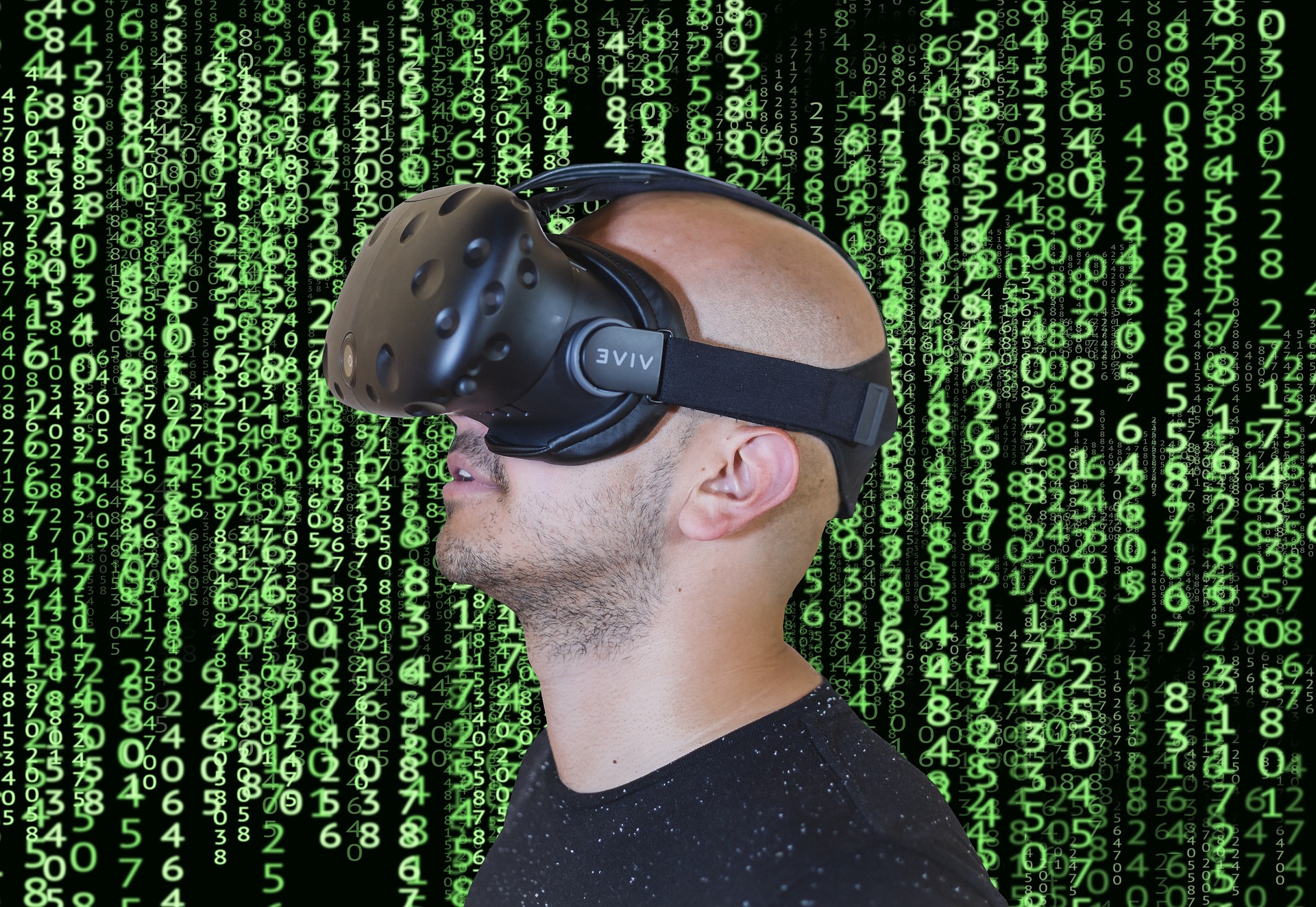In the dynamic landscape of Technology Advancements, Smart Wearables emerge as the vanguards of innovation, seamlessly integrating into our lives and promising a future where connectivity, health, and convenience coalesce. This exploration delves into the multifaceted dimensions of Smart Wearables, from their technological intricacies to their potential to reshape industries and enhance personal well-being.
The Rise of Smart Wearables
A Technological Marvel
Smart Wearables transcend their traditional roles as mere accessories, evolving into marvels of modern engineering. These sophisticated devices, encompassing smartwatches, fitness trackers, and more, go beyond conventional expectations. The fusion of miniaturized sensors, powerful processors, and intuitive software results in gadgets that not only tell time but redefine how we interact with the world.
Beyond Aesthetics: Functional Elegance
No longer confined to being fashion statements, Smart Wearables embody a perfect blend of aesthetics and functionality. The marriage of design elements ensures that these devices not only adorn wrists and bodies with style but also provide unparalleled utility. The era of wearables as mere adornments has passed; they are now indispensable companions enhancing our daily lives.
Technological Advancements in Smart Wearables
Health and Wellness Revolution
A compelling facet of Smart Wearables lies in their contribution to personal health and wellness. Advanced fitness trackers monitor not just steps but analyze heart rate, sleep patterns, and stress levels. This holistic approach empowers users to take control of their well-being, offering insights unimaginable just a few years ago. The revolution in health monitoring is an integral part of the wearables narrative.
Connectivity Redefined
Smart Wearables redefine connectivity, boasting built-in Bluetooth, Wi-Fi, and NFC capabilities. Seamlessly syncing with smartphones and smart home devices, wearables create an interconnected ecosystem. This harmony of devices enhances communication and efficiency, transforming our daily lives into a symphony of interconnected smart devices.
Exploring Smart Wearable Applications
Smartwatches: More than a Fashion Statement
Smartwatches, once mere fashion accessories, have evolved into command centers strapped to our wrists. They offer features ranging from receiving notifications and answering calls to monitoring fitness metrics and controlling smart home devices. The wrist-bound wonders have become indispensable, representing a convergence of style and substance.
Fitness Trackers: Personal Wellness Coaches
Fitness trackers have transformed into personal wellness coaches, providing real-time insights into physical activity, sleep quality, and overall health. The integration of AI algorithms enhances their predictive capabilities, offering personalized recommendations for a healthier lifestyle. Wearables are not just monitoring devices but proactive partners in our well-being.
The Future of Smart Wearables
AI and Machine Learning Integration
As we peer into the future, AI and machine learning take center stage in Smart Wearables. These technologies promise to elevate wearables from reactive to proactive. Envision a device not only tracking fitness but anticipating health needs, offering suggestions and interventions before issues arise. The marriage of AI and wearables heralds a future where technology anticipates and meets our needs seamlessly.
Augmented Reality (AR) on the Horizon
The integration of augmented reality in Smart Wearables opens new dimensions of user experience. Glasses that not only display notifications but overlay digital information onto the physical world. From navigation assistance to immersive gaming, AR is set to revolutionize how wearers perceive and interact with their surroundings.
Pioneering Healthcare Advancements
Remote Patient Monitoring
Looking ahead, Smart Wearables promise revolutionary impacts on healthcare. Remote patient monitoring, facilitated by wearables, allows for real-time tracking of vital signs, medication adherence, and personalized health data. These devices are becoming essential tools for healthcare professionals in providing proactive and personalized care.
Health Partnerships and Wearable Integration
Collaborations between technology companies and healthcare providers are on the rise. These partnerships aim to seamlessly integrate Smart Wearables into healthcare systems, offering a comprehensive approach to patient well-being. The convergence of technology and healthcare represents a significant stride toward a future where wearables contribute significantly to our overall health.
Evolving Design Paradigms
Fashion Forward
The evolution of Smart Wearables extends beyond technological advancements to design aesthetics. Fashion houses recognize the importance of merging style with functionality, creating wearables that are cutting-edge in technology and chic in design. The market now offers consumers wearables that align with both their tech preferences and fashion sensibilities.
Customization and Modular Devices
Looking forward, the trend of customizable and modular wearables gains traction. Users can tailor devices to meet specific needs, whether upgrading sensors for enhanced fitness tracking or adding modules for extended battery life. This shift towards modular design ensures that Smart Wearables remain adaptable to individual preferences and technological standards.
Regulatory Landscape and Ethical Considerations
Navigating Regulatory Challenges
As Smart Wearables advance, the regulatory landscape evolves to ensure consumer safety and data protection. Stricter regulations regarding data privacy and security are being implemented. Manufacturers must adhere to standardized protocols, providing users with transparent information about data collection, storage, and utilization.
Ethical Use of Biometric Data
Ethical considerations regarding the use of biometric data intensify as wearables become more integrated into our lives. Striking the right balance between innovation and user privacy is paramount. Companies must implement robust ethical frameworks, ensuring the collection and utilization of biometric data align with user consent and established ethical guidelines.
User Education and Empowerment
Bridging the Knowledge Gap
In the evolving landscape of Smart Wearables, user education is key. As devices become more intricate, ensuring users understand functionalities, settings, and the implications of data sharing is crucial. Manufacturers play a pivotal role in providing comprehensive user guides and educational resources, empowering users to maximize the potential of their wearables.
Empowering User Control
The future of Smart Wearables envisions a user-centric approach where individuals have greater control over their devices. Customization options, along with granular control over data sharing and permissions, empower users. This approach fosters a sense of ownership and trust in wearable technology.
The Uncharted Territories of Smart Wearables
Quantum Computing and Wearables
Looking further into the future, the integration of quantum computing with Smart Wearables holds promise. Quantum computing could provide unprecedented processing power, enabling wearables to perform complex tasks, process vast amounts of data in real-time, and unlock innovations beyond current imagination.
Environmental Consciousness in Wearable Technology
Sustainable Materials and Manufacturing
In response to global environmental concerns, Smart Wearables are exploring sustainable practices. Future wearables will utilize eco-friendly materials, minimizing environmental impact in production and disposal. The industry’s commitment to sustainability aligns wearables with global efforts to reduce the ecological footprint.
Circular Design Principles
Circular design principles gain traction in the future of Smart Wearables. Emphasizing recyclability and reusability, wearables with modular components reduce waste and contribute to a more sustainable lifecycle. This shift towards circularity reflects a commitment to minimizing electronic waste and fostering a more environmentally responsible tech industry.
Human Augmentation and Wearable Integration
Cognitive Enhancement
The integration of Smart Wearables with human augmentation is a captivating prospect. Wearables enhancing cognitive functions, augmenting memory, and facilitating seamless information retrieval could redefine the relationship between technology and the human mind.
Assistive Technologies for Accessibility
Smart Wearables extend beyond personal convenience to impact accessibility. Advanced assistive technologies can significantly improve the quality of life for individuals with disabilities. From smart glasses aiding the visually impaired to wearables enhancing communication for those with speech impairments, inclusivity through wearables is a significant advancement.
Challenges on the Horizon
Ethical Dilemmas in Biometric Data Usage
As Smart Wearables become integral, ethical considerations surrounding biometric data intensify. Balancing innovation with safeguarding individual privacy is challenging. Responsible and transparent use of biometric data is paramount to ensuring technological advancements benefit users without compromising fundamental rights.
Global Standardization and Interoperability
The increasing array of Smart Wearables necessitates global standardization and interoperability. Users should experience seamless connectivity regardless of brand or type. Industry stakeholders actively work towards standardized protocols to enhance interoperability, ensuring a cohesive and user-friendly ecosystem.
The Vision of Ubiquitous Connectivity
5G Integration
The rollout of 5G technology redefines the capabilities of Smart Wearables. Increased speed and bandwidth open avenues for more immersive experiences. From real-time augmented reality applications to instant data synchronization, 5G integration enhances wearables’ overall functionality.
Edge Computing for Real-time Processing
The future sees a shift towards edge computing in Smart Wearables. Enabling real-time data processing without relying solely on cloud infrastructure reduces latency and enhances responsiveness. Wearables equipped with edge computing capabilities deliver faster and more personalized experiences, setting new standards for user expectations.
Wearable Energy and Cybersecurity
Evolution of Wearable Energy
To tackle the perennial challenge of battery life, future Smart Wearables integrate innovative energy harvesting technologies. From solar cells to kinetic energy capture, these advancements aim to create wearables that are not only efficient but also self-sustaining. Eco-friendly power sources, including bio-compatible batteries, align with a global push toward greener energy solutions.
Cybersecurity in Wearable Ecosystems
As wearables become integral to daily routines, robust cybersecurity measures are crucial. Future wearables implement advanced encryption and AI-driven threat detection to fortify data protection. The workplace integration of wearables necessitates a cybersecurity focus to ensure the safe and secure adoption of these devices.
Wearables and the Workplace
Productivity Enhancement
In the workplace of the future, Smart Wearables enhance productivity. From smart glasses providing real-time data during meetings to wearables monitoring employee well-being, these devices contribute to a more connected and efficient work environment. The seamless integration of wearables into professional settings redefines how tasks are approached and collaboration is conducted.
Employee Wellness Programs
Corporate wellness programs benefit from the integration of Smart Wearables. Biometric sensors provide valuable insights into stress levels, physical activity, and overall well-being. Employers leverage this data to tailor wellness initiatives, fostering a healthier and more engaged workforce.
Closing the Gap: Accessibility and Affordability
Inclusive Design for All
The future of Smart Wearables emphasizes inclusive design principles. Wearables must cater to diverse user needs, including features that assist individuals with varying abilities. This commitment to inclusivity aligns with the broader goal of bridging digital divides.
Affordability and Mass Adoption
Advancements in technology will reduce the cost of manufacturing Smart Wearables. This reduction in production costs paves the way for more affordable wearables, enabling a broader demographic to access these transformative technologies. Mass adoption becomes a foreseeable reality, reshaping how societies interact with technology.
The Uncharted Frontiers Await
Quantum Leaps in Connectivity
The integration of quantum computing with Smart Wearables heralds a new era of connectivity. Quantum computing’s unparalleled processing power unlocks capabilities beyond current imagination. From instantaneous data processing to wearables contributing to scientific advancements, the convergence of quantum computing and wearables opens doors to uncharted frontiers.
Embrace the Future Today
In conclusion, Smart Wearables are not merely gadgets; they are envoys of a future where technology intertwines seamlessly with every aspect of our lives. As we anticipate the unfolding chapters of innovation, connectivity, and accessibility, embracing the future today means embracing the transformative power of Smart Wearables. The journey continues, and the possibilities are boundless.



